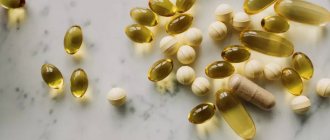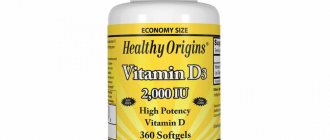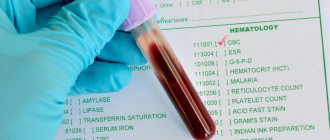Vitamin C is an important component of the diet of any person, regardless of gender and age. Since childhood, almost everyone has heard about the value of this substance for colds. Vitamin C not only helps to quickly get rid of annoying cold symptoms, but also helps the body avoid complications of infectious diseases.
Ascorbic acid is most relevant during the off-season, when environmental temperatures are unstable and the body experiences an acute shortage of vitamins and microelements. Despite this, a sufficient amount of ascorbic acid must be supplied to the human body, regardless of the time of year and circumstances.
The concept of ascorbic acid
The chemical formula of ascorbic acid is C6H8O6. The powder is no different from other vitamins: it is soluble in water, resistant to fat, has a sour taste, but is odorless. If stored improperly, it disintegrates and resembles a powder in its structure.
At what temperature is vitamin C destroyed? The destructive process begins at 60 degrees, and breaks down into particles at 100 degrees.
Chemists have proven that vitamin molecules are similar in composition to crystalline sugar, but there are still significant differences. Artificially synthesized vitamin C appeared in the food industry, which immediately became a popular food additive under the number E315. It does not have the same beneficial properties as the original, although it is much cheaper.
Functions in the body
The main role of ascorbic acid in the human body is the fight against radicals and antioxidant effect. It is also a powerful antioxidant, as it protects internal organs and tissues from possible damage and the development of cancer.
What is vitamin C for? With its participation, redox processes occur in the body, protein synthesis occurs, and connective tissues are strengthened. Vitamin C accelerates the healing of wounds and scars and has a positive effect on epithelial regeneration.
It is important for athletes to regularly take vitamin and mineral complexes containing ascorbic acid, since it normalizes energy processes and increases endurance. The synthesis of steroid hormones, the metabolism of folic acid, and some metals cannot do without vitamin C. In bodybuilding, the substance is valued for its role in gaining muscle mass, since the level of absorption and processing of protein depends on it.
The importance of ascorbic acid for the body cannot be overestimated. Vitamin C strengthens blood vessels and promotes better permeability of important elements through their walls. If vitamin C is present in the body in the right amount, inflammatory processes occur in a lighter form.
The absorption of iron thanks to vitamin C improves, and the blood is provided with an antianemic factor.
The immune system works at full strength in the presence of three main vitamins: A, C, E. Ascorbic acid is responsible for the functionality of protective cells; if there is enough of it, the immune system resists any foreign agents: viruses, bacteria, parasites.
Oncology is considered the plague of the 21st century; statistics show that the number of cancer cases is steadily growing. Oncologists say that with normal levels of vitamin C in the body, a natural fight against cancer cells occurs. However, if a surplus of ascorbate forms in the body, mutating cancer cells become more resistant, even radiation therapy does not kill them. Cancer patients are advised to maintain vitamin C at the proper level.
Ascorbic acid protects the liver from the effects of toxins, removes copper, radioactive substances, mercury, and lead. To prevent the development of diseases of the gastrointestinal tract, ascorbate has become an indispensable remedy. By controlling the level of the substance in the body, there is a chance to avoid cancer in the colon and bladder.
Acid normalizes the functionality of the nervous system, the body gains resistance to stress, and the strength to resist pathogens appears. In addition, the work of the adrenal glands is balanced and the required amount of hormones responsible for combating stress is produced. This is not all that ascorbic acid is responsible for.
It is impossible to give an objective assessment of the effect of vitamin C. In the twenty-first century, science does not know all the properties that a substance has. Do not underestimate control over the level of ascorbic acid in the body, since its deficiency causes the development of chronic diseases.
Sources of Vitamin C
The body, due to its characteristics, does not accumulate ascorbic acid, so you should carefully monitor its consumption. The daily diet does not often contain foods rich in vitamin C. The amount of the substance should be replenished in medicinal form or in the form of nutritional supplements. The natural vitamin is water-soluble and easily subject to heat treatment, which destroys its beneficial chemical properties.
Main sources of the substance:
- kiwi;
- rose hip;
- Bell pepper;
- melon;
- black currant;
- onion;
- tomatoes;
- oranges;
- apples;
- peach;
- persimmon;
- Rowan;
- baked potato;
- cabbage;
- leafy herbs.
Previously, oranges and tangerines were considered the main fruits containing the most vitamins. Over time, scientists have proven that this is not so, but it is difficult to compare with rosehip, bell pepper and kiwi in terms of the presence of the substance.
Among animal products, vitamin C is found only in the liver, adrenal glands and kidneys.
Herbs containing ascorbic acid are added to any dishes during cooking:
- mint;
- nettle;
- oats;
- parsley;
- plantain;
- raspberry leaves;
- sorrel.
These plants are easily digestible, as evidenced by more than one table of nutritional value of products. People who adhere to a healthy diet do not have to worry about their vitamin levels, since their diet consists of healthy foods, the caloric content of which will not harm the diet.
There are no recommendations on how vitamin C is absorbed. To absorb as much ascorbic acid as possible, follow these rules:
- Vegetables and fruits are peeled and cut immediately before consumption.
- During cooking, vegetables are placed only in boiling water so that the organic vitamin does not dissolve in the water during heating.
- Cooked vegetables should not be left in the broth, because everything is given up to the liquid, and the fruits become useless.
- Fresh vegetable salads are salted and seasoned with sauces only before serving.
Vitamin C is consumed instantly after it enters the body; take care to consume the vitamin evenly throughout the day.
It is advisable to divide the daily dose into three equal portions, thus maintaining the concentration of the substance in the body constantly. Having found out what contains the most ascorbic acid, try to properly prepare and eat foods with an increased source of the substance.
Table of contents in food products
Ascorbic acid is found in many foods that are included in the daily diet. For example, some of them can be placed in a table:
| Vitamin Representative | Volume in 100 g (mg) |
| Rose hip | 450-600 |
| Red bell pepper | 180-250 |
| Black currant | 180-200 |
| Green pepper | 130-150 |
| Spinach | 100-120 |
| Kiwi | 70-90 |
| Broccoli | 80-95 |
| Sorrel | 60 |
| Strawberry | 50-60 |
| Orange | 50-60 |
| Gooseberry | 40 |
| Lemon | 40-45 |
| Mandarin | 30-40 |
| Green onion | 25 |
| Potato | 25 |
| Apples | 15-20 |
| Cherry | 15 |
Ascorbic acid as a medicine
If there is a lack of vitamin in the body, it is recommended to replenish the supply with medications. Release form:
- dragee;
- pills;
- ampoules;
- powders.
The form of use is determined by the attending physician depending on the nature of the disease. The instructions for use warn of possible side effects if the drug dosage is incorrect.
Ascorbic acid dragees are prescribed to children because they resemble candy and not medicine. Effervescent tablets are popular among professional athletes. One tablet, diluted in a glass of water, replenishes vitamin reserves and invigorates before a grueling workout. The powder is available in sachets.
An injection solution is prepared in ampoules. One ampoule contains 50 mg and 100 mg, which allows you to administer the required dose of the drug at a time.
An overdose negatively affects the mucous membrane of the stomach and digestive tract as a whole. Pregnant women are at risk because the metabolism between the mother and fetus is disrupted. As a result, the child develops allergies, and the mother may develop problems with the gastrointestinal tract.
Vitamins
Vitamins (Latin vita - life) are a group of low molecular weight organic compounds of diverse chemical nature and structure. Vitamins are necessary for the normal functioning of vital processes in the body and must be supplied with food from outside, since the body itself synthesizes insufficient quantities.
“Everything is poison, and nothing is without poison; the dose alone makes the poison invisible” - Paracelsus.
A lack of vitamin in the body (hypovitaminosis) can cause disruption of the functioning of organs and organ systems and lead to diseases. Just like an excess of vitamins, hypervitaminosis can harm the body.
The modern classification of vitamins divides them based on their physical property - solubility:
- Fat soluble: A, D, E, K
- Water soluble: group B (B1, B2, B3 (PP), B6, B9, B12), P, H
We will analyze the vitamins in the order proposed in the classification above. It is important to understand that each vitamin is involved in certain biological processes.
The disorders that we see with hypovitaminosis are the very functions for which the vitamin is responsible. When the amount of vitamin is sufficient, dysfunction does not occur.
Vitamin A (retinol)
Symptoms of vitamin A hypovitaminosis are: skin lesions, blurred vision, dry cornea. Immunity is reduced, and children may experience delayed growth and development.
With avitaminosis (Greek a - without) vitamin A, night blindness develops - deterioration of twilight vision. This is due to a disruption in the synthesis of pigment in the rods of the retina, which are responsible for vision at dusk.
Vitamin A is found in milk, dairy products, liver, and fish oil. Precursors of vitamin A - carotenes - are found in spinach and carrots.
Vitamin D (calciferol)
Takes part in the exchange of calcium and phosphorus. With its deficiency, the strength of bone tissue decreases, rickets can develop, leading to disturbances in the growth and development of bone tissue.
Vitamin D is produced by ultraviolet radiation (sunlight) in the skin. Contained in vegetable oil, milk fat, egg yolk.
Vitamin E (tocopherol)
The most important role of vitamin E is its antioxidant function. It prevents the oxidation of our body's cells by free radicals and slows down aging.
Hypovitaminosis of vitamin E is extremely rare: this vitamin is present in the required amount in vegetable oils and can be stored in the body.
Vitamin K (antihemorrhagic factor)
Antihemorrhagic (Greek anti- - prefix meaning opposition, and haimorrhagia - severe bleeding) is the key word in defining the role of this vitamin. Without it, blood clotting is reduced, and minor injuries can lead to extensive subcutaneous hemorrhages (hematomas, bruises).
Vitamin K is involved in the synthesis of four clotting factors. Hypovitaminosis is rare, since vitamin K is partially synthesized by the microflora of the large intestine. A large amount of this vitamin is found in spinach and cabbage.
We've looked at fat-soluble vitamins: A, D, E, K. Now it's time to study water-soluble vitamins.
Vitamin B1 (thiamine)
It is a coenzyme of many enzymes involved in the aerobic stage of respiration on the cristae of mitochondria. Thiamine ensures the normal course of protein and fat metabolism. With its deficiency, the nervous system is affected.
Coenzymes (lat. co - together + lat. fermentum - leaven) are non-protein chemicals that are part of the active center of some enzymes. In this case, the enzyme cannot demonstrate its activity without the coenzyme.
Due to hypovitaminosis of vitamin B1, beriberi disease develops, manifested by pain along the nerves, paresis (Greek paresis - weakening) and paralysis of the muscles of the hands and feet.
In modern society, beriberi is rare because dietary intake of vitamin B1 is sufficient. Cereals and plant foods are especially rich in this vitamin.
Vitamin B2 (riboflavin)
It is a coenzyme of enzymes that participate in the synthesis of amino acids. Hypovitaminosis of vitamin B2 is manifested by muscle weakness and eye damage. This vitamin is found in almost all plant and animal products.
Vitamin B3 (vitamin PP, niacin)
It is a coenzyme of enzymes that participate in the reactions of the aerobic stage of respiration, which occurs on the cristae of mitochondria, and biosynthesis in the cell.
Vitamin B3 is synthesized by the microflora of the large intestine and is found in almost all plant and animal products.
Hypovitaminosis of vitamin PP is manifested by a disease - pellagra, which includes inflammation of the skin (dermatitis), damage to the digestive system (peptic ulcer) and the nervous system - inflammation of the nerves (neuritis).
Nicotinic acid is found in fish, bread, meat, milk, liver, and tea.
Vitamin B6 (pyridoxine)
It is a coenzyme of enzymes that participate in the synthesis of biogenic amines and amino acids. Vitamin B6 hypovitaminosis is rare and results in skin inflammation (dermatitis).
The vitamin is found in eggs, meat, fish, and vegetables; in addition, it is partially synthesized by the microflora of the large intestine.
Vitamin B9 (folic acid)
It is a coenzyme for many enzymes. Hypovitaminosis B9 (folic acid) is rare and leads to a decrease in the number of red blood cells in the blood (anemia) and impaired DNA synthesis in red bone marrow cells.
Folic acid is mandatory for pregnant women to reduce the likelihood of developing neural tube defects in the fetus. Folic acid is also necessary for men for the normal process of sperm formation.
Green leaves of plants are rich in folic acid (lat. folium - leaf).
Vitamin B12 (cobalamin)
It is a coenzyme of enzymes that transfer hydrogen and methyl groups during isomerization. Hypovitaminosis of cobalamin leads to the development of Addison-Biermer anemia (B12-deficiency anemia), and in the case of vitamin deficiency - to dysfunction of the nervous system.
In the case of hypovitaminosis, hematopoiesis in the red bone marrow is disrupted, as a result of which red blood cells become large and the transfer of oxygen to tissues is disrupted. Tissue cells experience oxygen starvation - hypoxia, as a result of which their function is impaired.
Cobalamin is synthesized by the microflora of the large intestine and is found in the liver.
Vitamin C (ascorbic acid)
Takes part in the synthesis of collagen in connective tissue, is an antioxidant - prevents the processes of free radical oxidation of body cells, slows down aging.
With hypovitaminosis of ascorbic acid, the disease scurvy develops: metabolic processes in the connective tissue are disrupted. Previously, scurvy was especially common among sailors whose diet was deprived of the main source of vitamin C - citrus fruits.
Scurvy is manifested by tooth loss, bleeding gums, and fragility of blood vessels. Immunity decreases, and hypochromic anemia may develop.
Vitamin C is found not only in citrus fruits; rose hips, bell red peppers, black currants and sea buckthorn are also rich in it.
Vitamin P (bioflavonoids)
Participates in metabolic processes in connective tissue, stabilizes it. The action of vitamin P is closely related to the action of vitamin C. It has an antioxidant effect. Vitamin P hypovitaminosis is accompanied by increased fragility of blood capillaries.
Large amounts of vitamin P are found in the same foods that provide vitamin C.
Vitamin H (biotin)
It is a coenzyme of enzymes involved in the reactions of biosynthesis of amino acids and fatty acids. Biotin deficiency is extremely rare and is accompanied by skin inflammation (dermatitis).
A large amount of vitamin H is synthesized by the microflora of the large intestine and is found in the liver, kidneys, potatoes, egg yolk, and onions.
© Bellevich Yuri Sergeevich 2018-2021
This article was written by Yuri Sergeevich Bellevich and is his intellectual property. Copying, distribution (including by copying to other sites and resources on the Internet) or any other use of information and objects without the prior consent of the copyright holder is punishable by law. To obtain article materials and permission to use them, please contact Yuri Bellevich
.
Daily value for humans
Scientists have not reached a consensus regarding the daily requirement of vitamin C for the human body. A common option for the average adult is 60-80 milligrams of the substance per day.
Infants are allowed to consume up to 40 mg of ascorbic acid, for children aged five - 45 mg, at fourteen years of age the daily norm increases to 50 mg.
The World Health Organization (WHO) recommends using a different calculation method: 2.5 mg of the substance is needed per kilogram of body weight. A 200-pound man should receive 225 mg of vitamin C per day. To replenish ascorbic acid levels for medicinal purposes, doctors increase the recommended dose three times.
In some categories, it is recommended to increase the standard doses, since the body does not have enough average amount of vitamin C in the body. These categories include:
- Pregnant women – 75 mg. If you have a question about whether pregnant women can take vitamin C, check with the antenatal clinic so as not to worry about the baby’s health. When planning pregnancy, the level of vitamin C in the body is important for both men and women. The daily norm does not exceed 100 mg.
- Nursing mothers – 90 mg.
- Smokers and alcoholics – 120 mg. Alcohol and nicotine accelerate the breakdown of vitamin C, which provokes the formation of a deficiency of the substance in the body.
- Persons in constant stressful situations.
- People living in areas with unfavorable ecology: factory emissions, exhaust gases, untreated drinking water, etc. As soon as harmful substances enter the body, ascorbic acid is used for their disposal. The need for vitamin increases.
- Residents of the Far North and Southern regions. Unusual weather conditions are considered stress for the body, so residents are advised to take 40% more vitamins than other categories.
- Women taking oral contraceptives.
Even if you belong to the group of people suffering from vitamin C deficiency, do not consume large doses of the substance at once. Divide the dose into 3 servings and take them throughout the day.
At what age is the use of ascorbic acid allowed? Vitamins without the presence of pathologies in the baby are introduced into the diet after the end of the breastfeeding period. When breastfeeding, the baby receives all the necessary elements from mother's milk.
The lethal dose for humans is 60-90 tablets in a short period of time. The body does not have time to remove the substance from the body with urine, and an overdose of the vitamin occurs.
Cooking tips and tricks
Ascorbic acid is one of the most unstable vitamins among all useful elements. The negative impact comes not only from high temperatures during cooking, but also from freezing food containing acid.
In order to preserve the beneficial properties of products with ascorbic acid, it is recommended to follow the following rules:
- store food in a place where open sunlight does not penetrate and where it is cool;
- do not use metal utensils during cooking, which contribute to the oxidation of the vitamin, reducing its beneficial properties;
- It is better to cook food by steaming, in a double boiler, or in a frying pan under a lid with the addition of a small amount of water;
- When cooking vegetables containing vitamins, they should be thrown into boiling water, and not brought to a boil in cold water;
- prepared meals with appropriate ingredients are not heated;
- cut, salt, season salad and vegetables immediately before consumption.
By following these simple recommendations, you can preserve the beneficial properties of vitamin C by 30%.
Due to the fact that this element belongs to the group of acids, it is not recommended to eat food containing it on an empty stomach. This is especially true for people with a weak stomach, which can cause irritation of the mucous membranes of the organ. It is better to take such foods together with starch-containing foods, for example, potatoes, bananas.
Vitamin C deficiency and its signs
Let us remember that since ancient times, citrus fruits were considered the only salvation from scurvy. 10 mg of ascorbic acid, which is equal to two fresh apples or a bunch of grapes, will help prevent the development of the disease. However, this is not enough to maintain the productive functioning of the body in conditions where the world is filled with negative factors: factories, exhaust fumes, dirty water, chronic stress.
Hypovitaminosis is manifested by a decrease in the functioning of the immune system, the body's vulnerability to respiratory and gastrointestinal diseases. Studies have proven that with a deficiency of ascorbic acid in schoolchildren, the body’s ability to resist pathogens is halved. Acid deficiency causes the development of serious diseases. Signs of vitamin C deficiency:
- sensitivity and bleeding gums;
- loss of teeth;
- decreased visual acuity;
- varicose veins;
- the appearance of bruises;
- prolonged wound healing;
- fatigue;
- hair loss;
- obesity;
- the appearance of wrinkles;
- irritability;
- inattention;
- joint pain;
- insomnia;
- depression;
- apathy.
With insufficient intake of ascorbic acid for two to three months, vitamin deficiency develops.
Before taking vitamins, find out their amount in the body in order to avoid unwanted consequences from an overdose. An excess of vitamin C is indicated by its presence in the urine.
You need to replenish vitamin C reserves in the body with the right foods, which were already mentioned above. Try to heat-treat fruits and vegetables as little as possible, since beneficial substances are destroyed extremely quickly.
How does the body get vitamins?
You can immediately understand that the vitamin has not been absorbed by the body. The lack of such an element is expressed in various violations, which will be discussed below. Various factors influence the absorption of an element. Among the most common:
- Having bad habits. It has been scientifically proven that smokers and coffee drinkers have more problems with vitamin absorption than those who do not abuse such habits. If you light a cigarette after eating, the vitamin content of foods decreases by 2 times. In this case, the antioxidants that protect the body are completely destroyed. As for coffee, the drink helps slow down the absorption of not only vitamin C, but also calcium, iron, and magnesium.
- Sedentary or overly active lifestyle. Both are harmful. In the first case, the amount of vitamin D obtained decreases, and in the second, the removal of the substance from the body is accelerated.
- Poor nutrition. The amount of vitamin C in food decreases if it has been sufficiently stewed or overcooked.
- Concomitant therapy with certain medications, especially antibacterial and oral contraceptives.
You can replenish the lack of vitamin in the body from food or ready-made vitamin supplements, which are purchased at the pharmacy. For better absorption of the vitamin, synthetic preparations are taken after meals.
Excess ascorbic acid in the human body
Ascorbic acid is extremely beneficial for humans, but in large quantities it can cause irreparable harm. The body functions normally only when it receives the required amount of vitamins and minerals, not exceeding the permissible norm. Excess and deficiency become impetus for undesirable processes that affect the overall health.
Consequences of excess ascorbic acid:
- Diarrhea.
- Destruction of blood cells.
- The simultaneous consumption of vitamin C and aspirin leads to irritation of the gastric mucosa and even the formation of erosion and ulcers. Aspirin causes increased consumption of ascorbic acid, which is excreted in the urine through the kidneys. Such a loss becomes the first sign of a serious vitamin deficiency.
- A high dose of vitamin C interferes with the absorption of vitamin B12, which is used as a dietary supplement. B12 deficiency has an extremely negative effect on the body, so its level should be regularly monitored by a doctor.
- Candies and chewing gums with a high content of vitamin C damage tooth enamel, so after eating them, be sure to brush your teeth and rinse your mouth.
- Excessive doses of ascorbic acid slow down the functioning of the pancreas, which is dangerous for patients with diabetes and people with anemia, thrombophlebitis, and thrombosis. Vitamin C influences the formation of a separate group of hormones that affect the functioning of the kidneys and blood vessels.
Ascorbic acid is freely available in stores and pharmacies, and can be purchased without a doctor's prescription.
Excess vitamin C has negative consequences that are as serious as deficiency.
Shortage and surplus
Insufficient vitamin content in the body can lead to quite dangerous diseases, including anemia and chronic adenoiditis. The following symptoms indicate a deficiency of such an element:
- rapid fatigue, even after mild physical exertion;
- violation of the work and rest schedule;
- frequent colds;
- periodic headache;
- increased irritability;
- paleness of the skin;
- muscle aches;
- increased bleeding.
At the initial stage, vitamin deficiency is difficult to diagnose, since the symptoms of deficiency are similar to other hypovitaminosis, as well as pathologies of internal organs. The main difference between vitamin C deficiency is the increased fragility of blood vessels.
When collagen synthesis decreases, vascular walls weaken, which leads to their damage. Corresponding clinical manifestations are nosebleeds, bleeding gums, and bruising under the skin.
No less dangerous is hypervitaminosis C, which is expressed in the appearance of the following symptoms:
- nausea and vomiting syndrome;
- heartburn;
- inflammatory processes in the esophagus;
- diarrhea;
- red blood cell hemolysis (cell destruction);
- disorders of the pancreas;
- formation of stones in the kidneys;
- manifestations of disturbances in the functioning of the heart and blood vessels.
Doctors do not recommend consuming large amounts of vitamin C for women during pregnancy, people suffering from increased blood clotting, thrombophlebitis, thrombosis, or diabetes.
Vitamin C in medicine
The beneficial properties of ascorbic acid have become the reason for its popularity in medicine. Vitamin C-based preparations are prescribed for a wide range of diseases:
- scurvy;
- avitaminosis;
- hepatitis;
- cirrhosis;
- helminthiasis;
- ulcer;
- fracture;
- bleeding;
- diathesis;
- infectious diseases;
- dystrophy.
Doctors, after studying the patient's medical history, may increase the dosage of vitamin C to 1.5 g per day. Intramuscular medications are administered in case of acute vitamin deficiency; in other cases, the diet is regulated and pills are prescribed.
The famous doctor Linus Pauling became an ardent supporter of the use of vitamin C for medicinal purposes. The scientist advocated the use of the substance in the treatment of serious diseases and minor ailments, but this trend was not confirmed by research by physiologists. Some patients, after exceeding the daily norm, developed serious problems caused by hypervitaminosis.
During pregnancy, additional examinations and tests are carried out, since both the woman and the child can be affected. It is not for nothing that there are restrictions on the use of vitamin C for pregnant women, since in the early stages its excess provokes miscarriage.
Ascorbic acid is prescribed for delayed menstruation and irregular cycles. Vitamin C is involved in the production of estrogen, an essential hormonal component necessary for the normal functioning of the female reproductive system. When there is a sufficient amount of this hormone, the muscle layer of the uterus contracts, provoking menstruation. Thus, the substance helps regulate the flow of menstruation and improves women’s health.
Application in cosmetology
Ascorbic acid, as an antioxidant, is included in anti-aging cosmetics for women. Products based on vitamin C prevent the effects of free radicals on the skin of the face, which is why it is used in the manufacture of anti-aging creams.
The presence of a vitamin in the list of cosmetic ingredients does not guarantee quality, since the amount of the element used is not always enough to produce an effect. The optimal dose in cosmetology ranges from 0.3% to 10%. Professional preparations on the labels contain information about the amount of active substance and the percentage of components.
Due to the sensitivity of the vitamin to light and air, cosmetics based on it are produced in sealed, tinted packaging with a dispenser.
Vitamin C-based facial cosmetics perform the following functions:
- protect the skin from exposure to infrared rays;
- synthesize collagen;
- restore collagen fibers;
- slow down the aging process;
- increase skin tone;
- prevent the appearance of age spots;
- relieve inflammation;
- refresh and improve complexion;
- strengthen vascular walls.
Best materials of the month
- Coronaviruses: SARS-CoV-2 (COVID-19)
- Antibiotics for the prevention and treatment of COVID-19: how effective are they?
- The most common "office" diseases
- Does vodka kill coronavirus?
- How to stay alive on our roads?
In winter, to replenish vitamin C reserves, it is necessary to take vitamin and mineral complexes for the skin.
Ascorbic acid is useful for hair; it gives hair shine and silkiness. Liquid vitamin C in ampoules is added to ordinary shampoo or hair conditioner. Nutrition along the entire length is provided during each wash.









